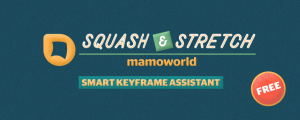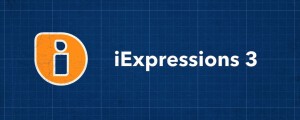Section 4
Active Squash & Stretch
All deformation that is based on inertia is a passive reaction to exterior forces. As I mentioned, living creatures have muscles, which they actively squash and stretch to create their own forces and movement. This active Squash & Stretch looks very different to the passive type we’ve seen so far. Here’s a comparison.
Active Squash & Stretch follows much more relaxed rules than the passive type. Since passive Squash & Stretch is driven by the basic laws of physics, it always behaves the same (with varying intensity, depending on the material). But active Squash & Stretch is caused by active decisions by the creature, so it’s way less predictable and requires your creativity create it.
The best tip I can give here is to ask yourself how you would act if you were the object. If you wanted to jump up high from a standing position, for example, you’d first bend your knees to prepare for the jump. That’s why the cube in the example above squashes in preparation for the actual jump. You then jump and stretch out as long as possible – likely while also raising your arms to create the maximum amount of upward force. In much the same way, the actively jumping cube stretches and becomes very thin and tall when starting the jump. At the peak of the jump, you would pull your feet towards yourself to get maximum distance to the ground, so we also squash the cube again at the highest point. When falling down, you would instinctively move your legs down as much as possible. This is because you anticipate the impact and try to dampen it by bending your knees as you land. So, we also stretch the cube into a tall, thin shape while it’s falling so it seems like it’s preparing for a soft landing.
If you compare this active deformation to the passive type, you’ll notice it’s often the exact opposite. While flying upward, for example, the passive cube is still squashed from being thrown, whereas the active one is stretched out. Also note that in general, active squash and stretch is more intense than passive. This is because in order to create your own forces and actively influence your movement, you have to deform quite a bit. Of course, any actively moving object is also influenced by the inertia of its matter, but the active movement is so much stronger than the passive part that it’s barely noticeable.
Anticipation
The most obvious feature that distinguishes active from passive squash & stretch is the anticipation. As I’ve already described in the Focus chapter, anticipation means the character makes a preparatory move before the main action. In our example, the cube squashes before the actual jump. Notice that the passive cube doesn’t move at all during that phase. Anticipations can themselves include complex moves that involve much more than just squash & stretch. But Squash & Stretch is usually at least a part of it.
So, what lessons have we learned in this section? If you want to bring your animations to life, you need to go beyond the basic, passive Squash & Stretch. Add anticipation, and don’t be afraid to try deformations that don’t just follow the basic rules of inertia. If your objects appear to actively deform in their movement, your brain will be convinced that they are alive.

Create animations with Squash & Stretch in no time with a collection of ready to use behaviors, carefully handcrafted by professionals and controlled by an intelligent system – ensuring your animations come to life without starting from scratch each time.

Link texts, colors and data from your Ae project to a JSON file.

Create complex expression-driven templates, character rigs, shape animations and more without writing any code!